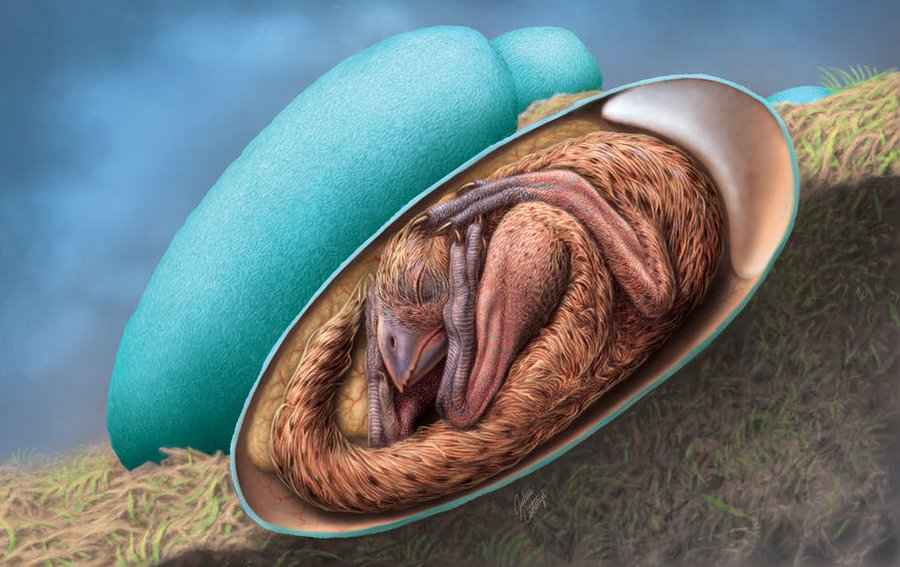Report by Alka Singh
Scientists discovered a well-preserved dinosaur embryo within a fossilized egg in Ganzhou, Southern China. The egg is believed to be 72-66 million years old and belongs to an oviraptorosaur.
Oviraptorosaurs were toothless theropod dinosaurs that existed in Asia and North America during the Cretaceous period. The embryo is named as ‘Baby Yingliang.’ It is toothless and 7 cm long and 8 cm wide, while the skeleton is 24 cm long.
It is one of the most well-preserved dinosaur eggs ever found. The fossilized egg was discovered at the Shahe Industrial Park in 2000 and given to the Yingliang Stone Natural History Museum.
However, the egg was kept in a room until 2015, when a staff worker saw a bone protruding from the shells. It was then sent to specialists at the University of Birmingham to be investigated.
One of the most noteworthy findings of this study was that the posture of baby Yingliang looks like that of a 17-day-old chicken embryo. This position is known as “pre-tucking” posture. It is commonly known that birds must achieve what is known as a “tucking” position in order to hatch properly.
If a bird does not achieve this posture, it will be unable to hatch. These findings imply that oviraptorosaurs may have shown pre-hatching behaviours comparable to contemporary birds.
These and their other findings were published in the journal iScience.
Image Credit: University of Birmingham

